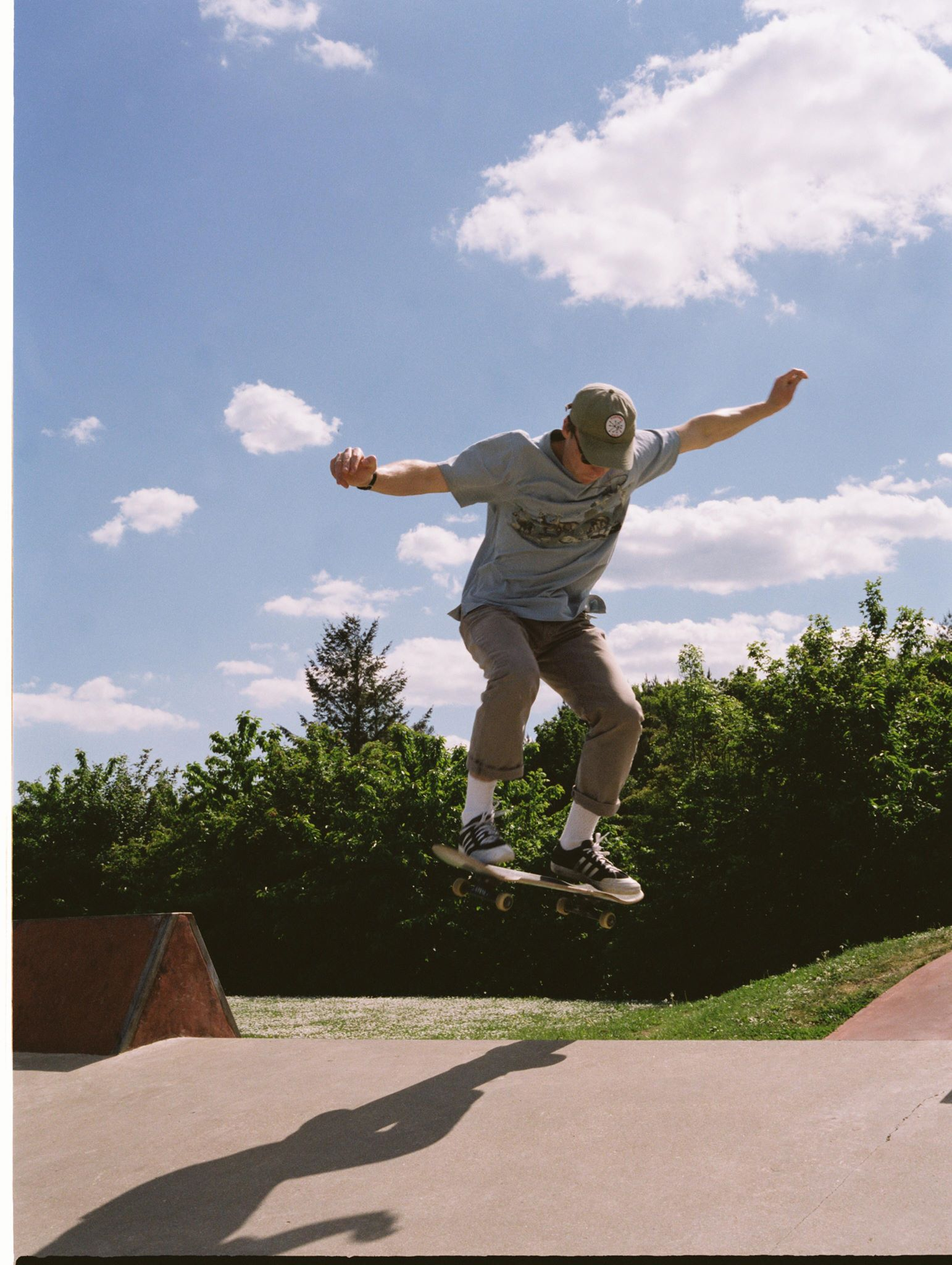By Luke Mitchell
Many students at Sussex will be of an age where they remember the first Tony Hawk’s
Pro Skater game on the Playstation One, along with subsequent entries in the series
that kept us entertained from childhood right through to our teenage years. Part of their
re-playability (and brilliance) was derived from the urban areas they portrayed, as a
blank canvas for tricks and stunts. These included city spaces across the globe, along
with three iterations of an American high school that were presented as levels to
progress through. Other greats include the airport and the cruise ship settings from
Tony Hawk’s Pro Skater 3.
These levels were interspersed with depictions of some of the world’s most famous
skateparks too which, unlike their urban counterparts, are designated and sanctioned
areas for skateboarders to hone their craft. As a child, this pairing completely reoriented
my perspective of the world around me. According to the game and the skateboarding
professionals shown in the live action opening sequences, a staircase could become a
stage for a kickflip. If it had a handrail, even better: you could grind down it. Even
though I’m now a grown up (apparently), my gaze has retained this quality – once you
start to skateboard, ramps show up everywhere.
This way of interpreting urban environments and cityscapes has caused two main
antagonisms throughout skateboarding’s history: between street skaters and park
skaters, but also between skaters and authorities. To find out more, I spoke to Christian
Stevenson, former host of BAFTA winning TV series RAD: The Groms. The award-
winning series of the show, which aired in 2004, saw Christian take a group of six up
and coming teenage skaters (the Groms) from Britain to America to skate the best
parks.
“The best skater in the world is the one having the most fun.” Christian remarked on
this first antagonism, between street skaters and park skaters. “People judged too much
in the early 2000’s. Back in the 80’s and 90’s if you saw a skater you’d be like ‘hey man!
How’s it going?’. It used to be that you had been persecuted together, so you’d go skate
together”. Skating, then, was an act of quasi-defiance against grind blockers and skating
tickets dished out in the cities. The famous adage that ‘skateboarding is not a crime’
rung true to all skaters at the sport’s inception and throughout its golden age.
Christian explained that the early 2000’s divide between street and park has thankfully
been ironed out: “Luckily, all the worrying about how you skate has disappeared.
Skateboarding’s evolved: it’s about having fun and riding all terrain”. This, of course,
left skaters better poised to make a totalized statement in favour of their craft, which
led to a process of compromise between skaters and their detractors: this came in the
form of skateparks. But how were these spaces to incorporate the elements that street
skaters had built their side of the deal on? “The street’s always been exciting to skate.
However, street skating in most US cities is illegal, which is why they pushed them all
into parks.” As a result, skate parks built in the US are top of the range: immense
concrete playgrounds that cater not only to the ramp riders but to the street surfers too.
The parks there were developed with emulation of staircases and flat banks in mind: the
story in the UK was unfortunately very different for a long time.
Kids like me who grew up skating in small-town England will remember all too
intimately the standard set up: one pre-fab metal ramp which led down to a harsh
concrete transition. Then, a slippery box of the same material, before turning you round
at the other end with another ramp, just a bit smaller than its counterpart. They sooner
became sites for anti-social behaviour than anything worth riding, be it on a skateboard,
roller blades or BMX.
Upon seeing the magnificent American skateparks on the Groms tour, Christian came
back to the UK determined to change things. A couple of years later, the Cuckfield bowl
arrived under his design – a skatepark of the US type similar to The Level in Brighton.
“It took going around and seeing how to do it wrong and then how to do it right before
tackling the Cuckfield one. We had very limited space, and I was also trying to create a
park that had flow but also had some obstacles like a street park.” With visions like
Christian’s here and across the Atlantic, street skaters and park skaters have a home
together in far better facilities than previously available.
The benefits of this arrangement for both street skaters and local authorities are clear:
the energy of the former is redirected to a designated zone as opposed to shopping
centres and other public areas.
The question of orthodox street skating, then, is hard to answer these days: in the wake
of its domestication through skateparks and brand adoption, has it all become a little
too ‘safe’? Has it lost that interpretive edge it once had when looking at urban areas? I’m
not so sure; I still see skaters tearing up city centre stair sets now and again, but they’re
all much younger and more chipper than I, at this grand age of 21. My expression on
four wheels is no longer one of rebellion; I wear a helmet and ride ramps, probably with
a coffee and a slice of cake nearby. The risk and adventure the streets promise is still
there to be enjoyed by the up and coming shredders, as well as the more crafted thrill
offered in skateparks. Nowadays, there’s no need for skaters to be divided: street or
park, it’s all the subject to the same end goal. Having fun.

